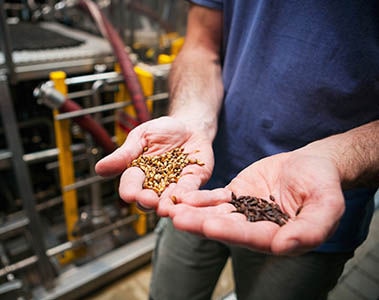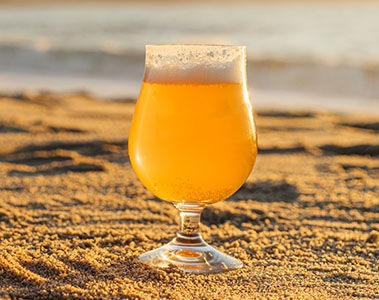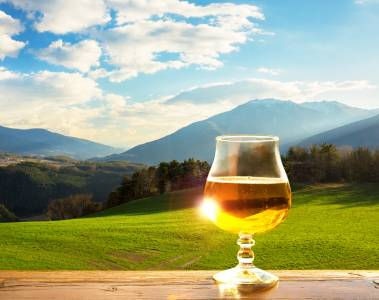
News
8월 13, 2022
맥주 프리미엄으로 가는 길
어려운 시기, 기회와 소비자 트렌드 찾기
어려운 시기에서 기회를 찾기

어려운 시기에서 기회를 찾기
옛날에 커피 바에 들어가서 '스키니 라떼'를 주문하면 의아한 표정을 지었을 것입니다. 물론 오늘날에는 큰 사업입니다.
그렇다면 양조 업계에서 '스키니 맥주'의 시대가 곧 열릴 수 있을까요?
ABV 4%, 95칼로리의 '저칼로리 IPA'인 Slightly Mighty부터 Michelob과 95칼로리의 울트라 브랜드와 같은 주요 브랜드에 이르기까지 100칼로리 이하 맥주가 점차 등장하고 있는 추세입니다. 최근 몇 년간의 공예 혁명과 마찬가지로, 이러한 트렌드는 안목 있는 젊은 소비자들의 새로운(그리고 계속 증가하는) 물결에 의해 주도되고 있습니다.
하지만 색다른 맥주 음용 경험에 대한 갈증은 단순히 칼로리를 낮추기 위한 것이 아닙니다.
오늘날의 안목 있는 맥주 애호가들은 더 많은 선택지를 원한다는 것을 잘 알고 있습니다. 핵심 질문은 그들이 정확히 무엇을 선택할 것인가 하는 것입니다. 우리 모두가 알고 있듯이 매우 어려운 시기에 양조 업계는 어떻게 이에 대응할 수 있을까요?

프리미엄으로 가는 길
보고서에 따르면 맥주는 점점 더 많은 소비자에게 프리미엄 제품으로 인식되고 있는 것으로 나타났습니다. 하지만 '프리미엄'은 더 이상 맛에 관한 것이 아닙니다...
특히 저칼로리 맥주뿐만 아니라 글루텐 프리 맥주, '로컬' 맥주(및 무알코올 맥주)에 대한 수요도 높은 것으로 조사되었습니다.
가장 중요한 것은 소비자들이 이러한 새로운 기능성 맥주의 매력적인 혜택에 기꺼이 비용을 지불할 준비가 되어 있다는 사실입니다.
지속 가능성은 여전히 중요한 의제입니다.
기후 변화가 원자재의 품질과 가용성에 영향을 미쳐 생산자와 소비자 모두에게 피해를 줄 수 있다는 사실이 분명해지고 있습니다. 또한 지속 가능한 양조를 통해 비용을 절감하여 성능을 향상시킬 수 있습니다. 이에 따라 양조업체들은 보다 지속 가능한 양조 관행을 위해 노력하고 있습니다.
예를 들어 하이네켄()은 탄소 배출량 감축에 대한 포부를 밝히기 위해 'Drop the C' 프로그램을 시작했습니다. 칼스버그( )는 맥주 캔 6팩을 플라스틱 대신 접착제를 사용하여 보관하고 있으며(지속 가능한 이니셔티브에 대해 여기에서), AB인베브( )는 양조용 곡물을 공급하는 아프리카 현지 농가를 지원하는 프로그램을 운영하고 있습니다( ). AB인베브의 지속 가능한 포부에 대한 자세한 내용은 에서 확인할 수 있습니다.

소규모 양조장도 변화를 원하고 있으며, 수제 맥주 업계에서는 지속 가능성 의제 를 수용하고 추진할 수 있는 기회에 대해 점점 더 많은 논의가 이루어지고 있습니다.

프리미엄 증명
덧붙여 말씀드리고 싶은 것은 이 보고서의 집계는 제 '개인적인' 연구 결과라는 점입니다.
최근에 형이 제 고향인 포르투에 있는 새로운 수제 맥주 펍에 데려갔습니다. 맥주 애호가인 저는(포르투갈 북부 출신인 저는 보통 슈퍼복 을 즐겨 마십니다) 다양한 종류의 맥주가 있다는 사실에 놀랐습니다.
각각의 맥주는 생산지, 양조 방법, 재료의 원산지 등 저마다의 스토리가 있어 마치 맥주 자서전을 읽는 것 같았어요! 하이라이트는? 글쎄요, 두 가지가 있었습니다.
첫 번째는 포르투 와인 배럴에서 숙성된 최고급 맥주였습니다! 두 번째는 태양 에너지를 사용하여 생산된 맥주인데, 저는 탄소 발자국이 큰 맥주를 마시고 싶지 않기 때문에 이 점이 가장 큰 차이점입니다.
두 가지 모두 매우 중요한 한 가지 공통점이 있습니다:
저와 같은 소비자들이 기꺼이 프리미엄 가격을 지불할 수 있는 프리미엄 제품이자 매우 차별화된 제품( )이었습니다.
열린 마음을 가진 모든 맥주 애호가들에게 한 줄기 희망이 될 것입니다.
보고서 다운로드
DSM은 최근 (독립적으로 실시한) 최신 글로벌 인사이트 보고서의 일환으로 4개 대륙에 걸쳐 1,000명의 맥주 애호가에게 향후 트렌드에 대해 물었습니다.
Looking for opportunity in challenging times
Once upon a time if you walked into a coffee bar and asked for a ‘skinny latte’ you would have been met with a puzzled expression. Today of course, it’s big business.
So, could we be about to see the ‘skinny beer’ come of age in the brewing world?
From the Slightly Mighty (a 4 percent ABV, 95-calorie “Low-Cal IPA) to major brands like Michelob and their 95-calorie Ultra brand we’re seeing the gradual emergence of the sub-100-calorie beer. Much like the Craft Revolution of recent years, this trend is being driven by a new (and ever-growing) wave of younger, discerning consumers.
But this thirst for a different beer drinking experience is not just about lower calories.
We all know that today’s discerning beer drinkers are looking for more choice. The key question is, what precisely will they be choosing? And how could we as a brewing industry react to this in what we all know are very challenging times?

The path to premium
Our report revealed that beer appears to be increasingly viewed by consumers as a Premium product. But ‘Premium’ isn’t just about taste anymore...
In particular, our research indicated a strong demand not just for low-calorie beer but also for gluten-free beers, ‘local’ beers (and no-low-alcohol beers).
Most importantly, we found that consumers are ready and willing to pay for these attractive new functional beer benefits.
Sustainability remains high on the agenda
It’s becoming clear that climate change will likely impact the quality and availability of raw materials, which will have damaging effects for both producers and consumers. In addition, sustainable brewing enables cost savings, which can drive improved performance. In response, brewers are making commitments to more sustainable brewing practices.
Heineken, for example, launched its ‘Drop the C’ program to articulate its ambitions for reduced carbon emissions. Carlsberg is using glue (instead of plastic) to keep six packs of beer cans together (read about their sustainable initiatives here), and ABInbev is running a program to support local farmers in Africa from which they source cereals for brewing. You can read more about ABInbev's sustainable ambitions here.

Smaller breweries want to make a difference too, and conversations in the world of craft brewing increasingly revolve around the opportunities to embrace and drive sustainability agendas.

Proof of premium
I’d like to add that our report tallies with my own ‘personal’ research.
My brother recently took me to one of the new craft beer pubs in my hometown of Porto. As an avid beer drinker (being from northern Portugal, it’s usually Super Bock all the way for me), I was astonished to find a vast array of beers.
Each had its own story: where it came from, how it was brewed, where the ingredients were sourced from... it was like reading a beer autobiography! The highlight? Well, there were two.
The first was a super high-end beer, aged in Porto wine barrels! The second, a beer produced using solar energy - which for me is a major point of difference because I don't want to drink beer with a huge carbon footprint.
Both had one very important characteristic in common:
They were premium and highly differentiated products that consumers (like myself) were very happy to pay a premium price for.
A ray of hope for open-minded brewers everywhere.
Download Report
Here at DSM we recently asked 1,000 beer drinkers spread across four continents about the upcoming trends as part of our latest (independently conducted) Global Insights Report.


